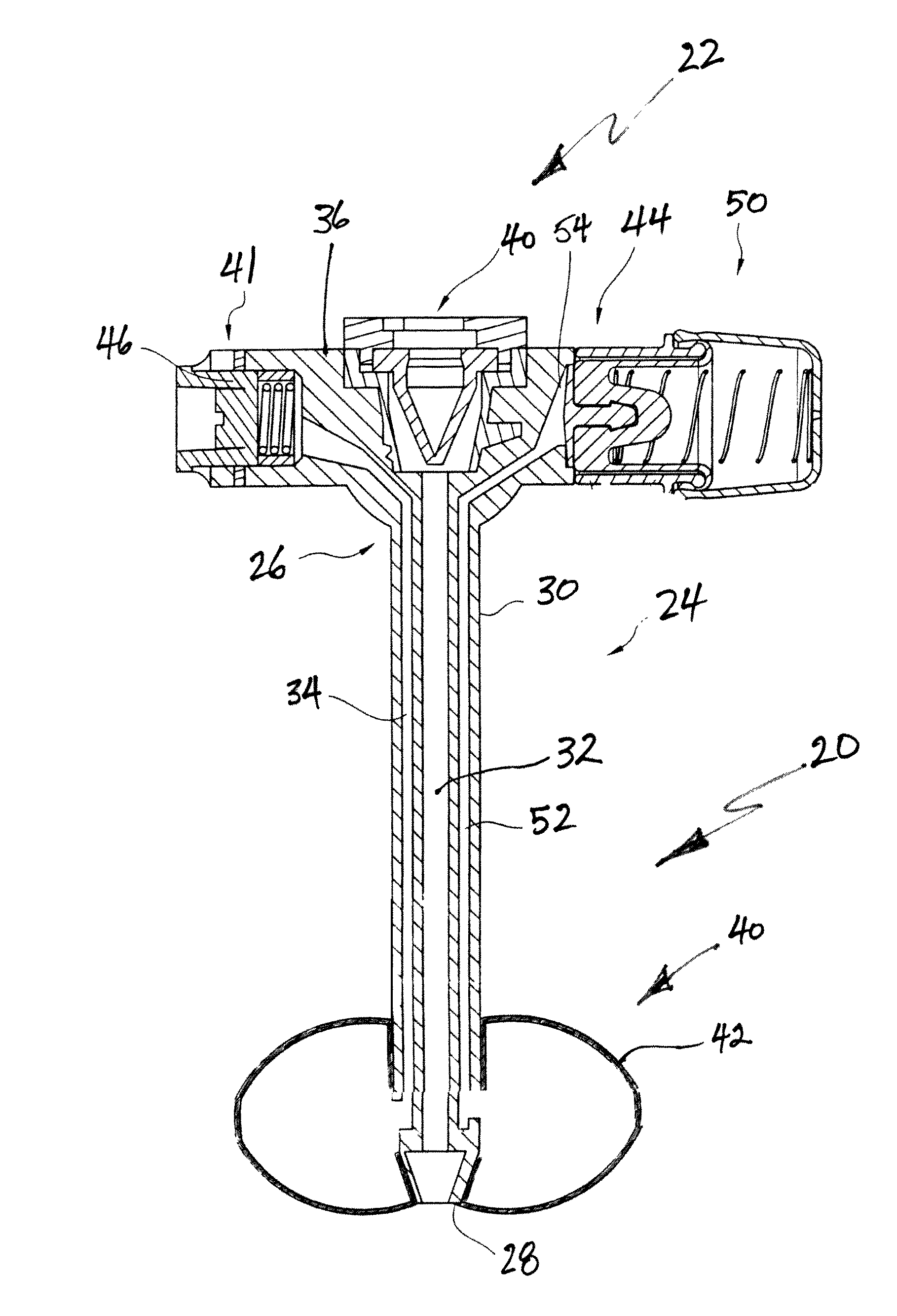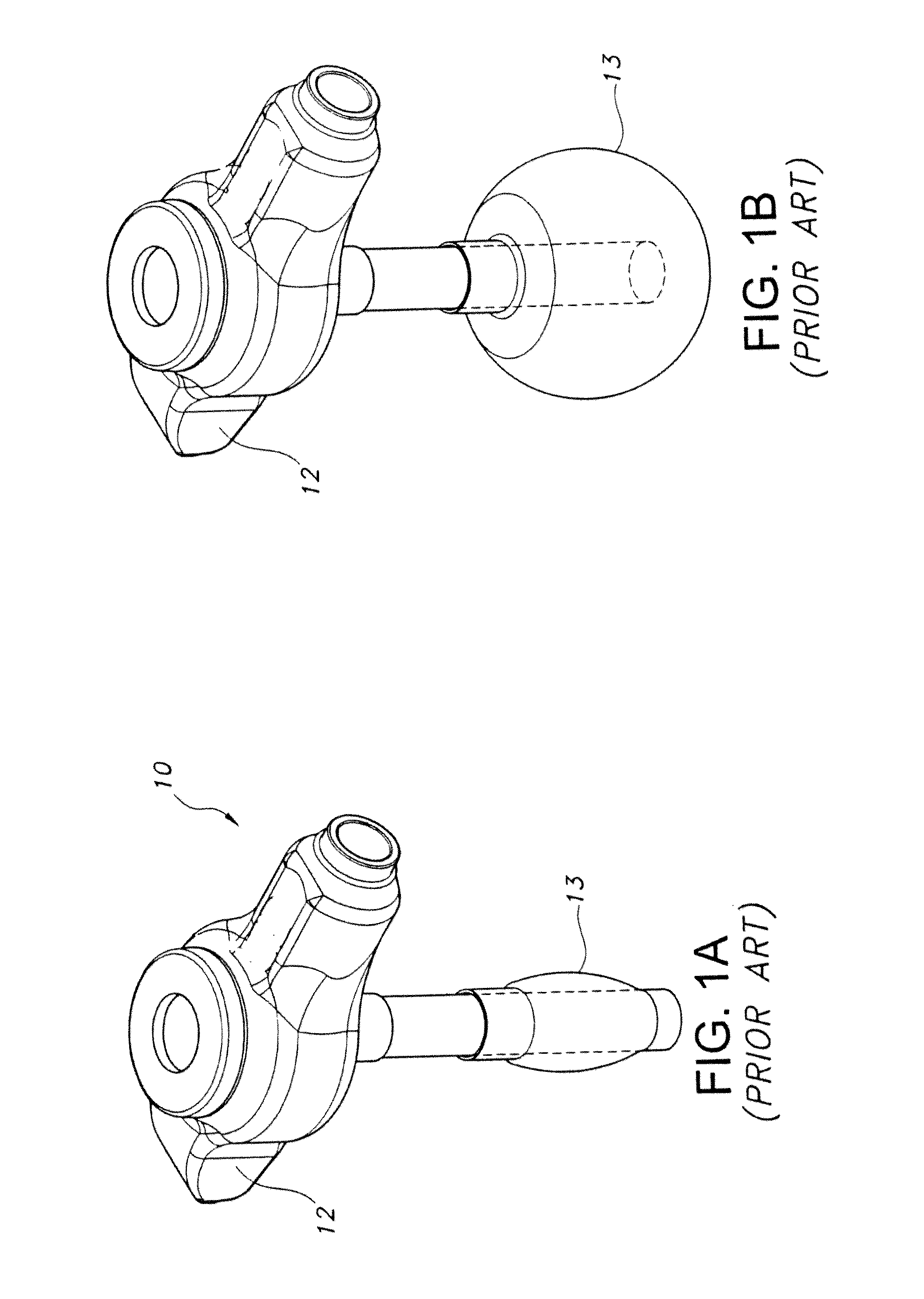Inflatable retention system for an enteral feeding device
a technology of inflatable retention and enteral feeding, which is applied in the field of improvement, can solve the problems of changing the size of the balloon, reducing the retention or resistance of the balloon, and reducing the ability of the balloon to be inserted and removed through the stoma, so as to achieve less elastic
- Summary
- Abstract
- Description
- Claims
- Application Information
AI Technical Summary
Benefits of technology
Problems solved by technology
Method used
Image
Examples
example 1
Retention Testing
[0094]Samples of different enteral feeding tube devices that utilize different retention mechanisms were tested according to the Retention Test Procedure described above using the MTS Alliance RT / 5 (DVC068-01) tensile tester and 250 N load cell (DVC068-06). Approximately 10 specimens of each sample were used except for Sample 2 (which has only one specimen) and an average value for the peak load (referred to as “retention force”) was determined.
[0095]The following comparative samples were tested:
[0096]Sample 1—Kimberly-Clark MIC-KEY® low profile enteral feeding tube with silicone balloon—molded to be apple shaped. Size 16 French (16 Fr) feeding tube. The balloon was filled with 5 milliliters of water. During testing, the silicone balloon deformed at peak load (i.e., the “retention force”) and the device pulled through the retention plate fully intact.
[0097]Sample 2—Kimberly-Clark MIC-KEY® low profile enteral feeding tube with silicone balloon—molded to be generally ...
example 2
Retention Diameter / Tube Diameter
[0108]The maximum diameter in the perpendicular direction from the axis of the tube of each retention portion of the Samples from Example 1 (with the exception of Sample 2) was measured. For the devices that require inflation, the devices were inflated with the volume of water specified in Example 1 with the exception of Samples 10 and 11 which were inflated to a diameter of 12 millimeters which represents the fully extended or distended state of the balloon on that device. The diameter of the tube was measured in a region where the balloon or other retention device was not attached. The diameter of each tube was uniform along the length of the tube. The retention diameter was divided by the tube diameter and the ratio is reported in Table 4.
[0109]
TABLE 4RetentionRetentionTubeDiameter-TubeDeviceDiameterDiameterDiameter RatioSample 1 - 16Fr Silicone20.4mm5.33mm3.83Balloon, apple shapedSample 2 - 18Fr SiliconeSample6mmN.A.Balloon, disc shapeddestroyeddu...
example 3
Balloon Stability
[0110]The balloon used as the retention component in the invention has a shape that is generalized as an oblate spheroid like other balloons used for enteral feed tubes. This shape is different from cylinder-like ones that are typical for vascular catheters, e.g. angioplasty catheters. As described previously, such generalized oblate spheroid shapes have characterizing diameters along their minor and major axes. For purposes of this Example, the greatest distance of the spheroid in the direction of its minor axis is termed the polar diameter (P) and the largest diameter in the direction of its major axis (orthogonal to the minor axis) is termed an equatorial diameter (E). In keeping with previous preferred descriptions but using the terminology of this Example, preferred shapes of the balloons of the invention have polar diameters that are significantly less than their equatorial diameters.
[0111]In making the balloons used in the invention, the balloons are preforme...
PUM
 Login to View More
Login to View More Abstract
Description
Claims
Application Information
 Login to View More
Login to View More - R&D
- Intellectual Property
- Life Sciences
- Materials
- Tech Scout
- Unparalleled Data Quality
- Higher Quality Content
- 60% Fewer Hallucinations
Browse by: Latest US Patents, China's latest patents, Technical Efficacy Thesaurus, Application Domain, Technology Topic, Popular Technical Reports.
© 2025 PatSnap. All rights reserved.Legal|Privacy policy|Modern Slavery Act Transparency Statement|Sitemap|About US| Contact US: help@patsnap.com



